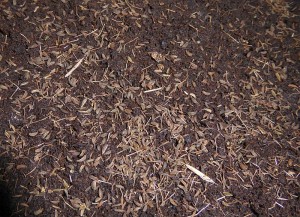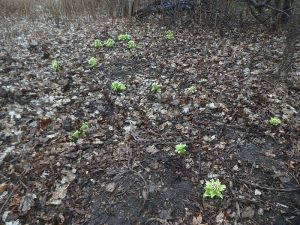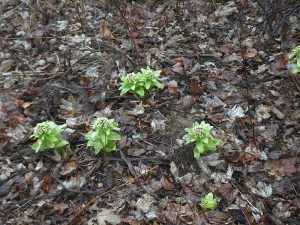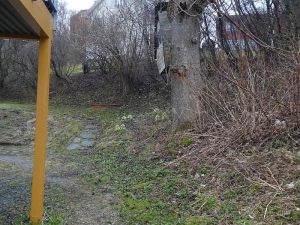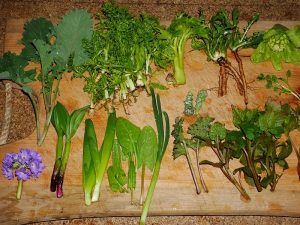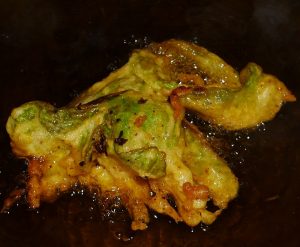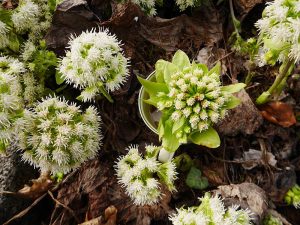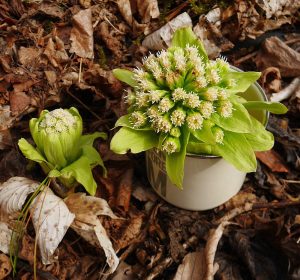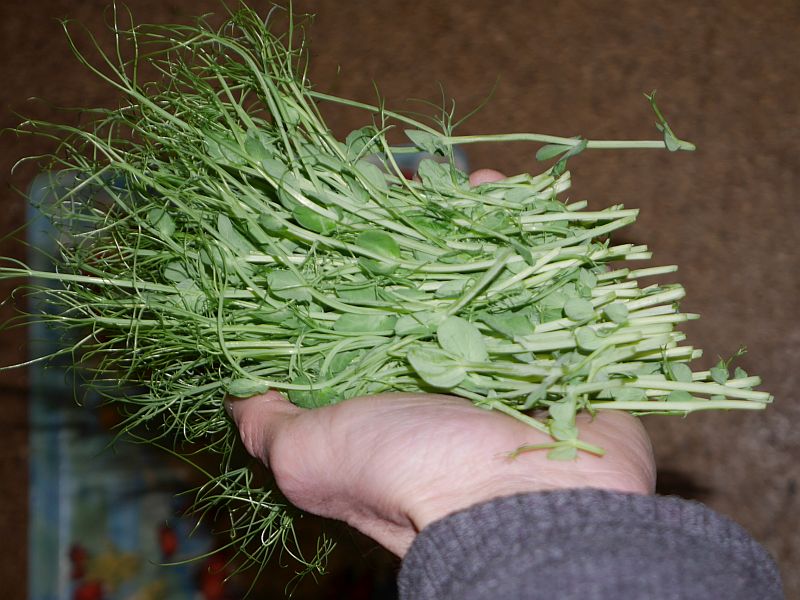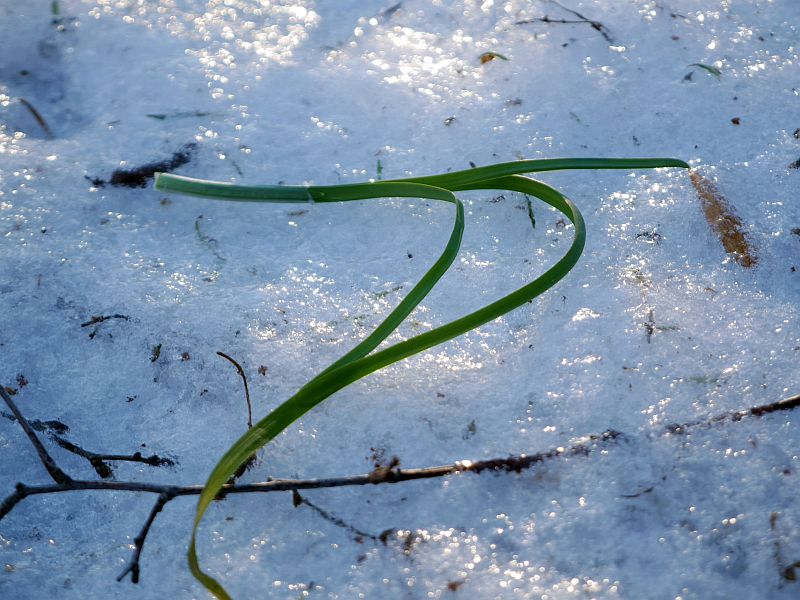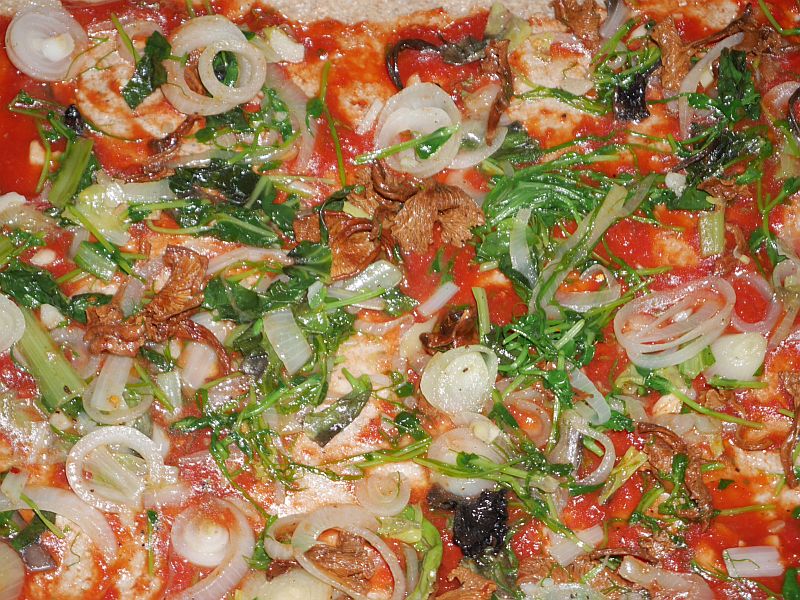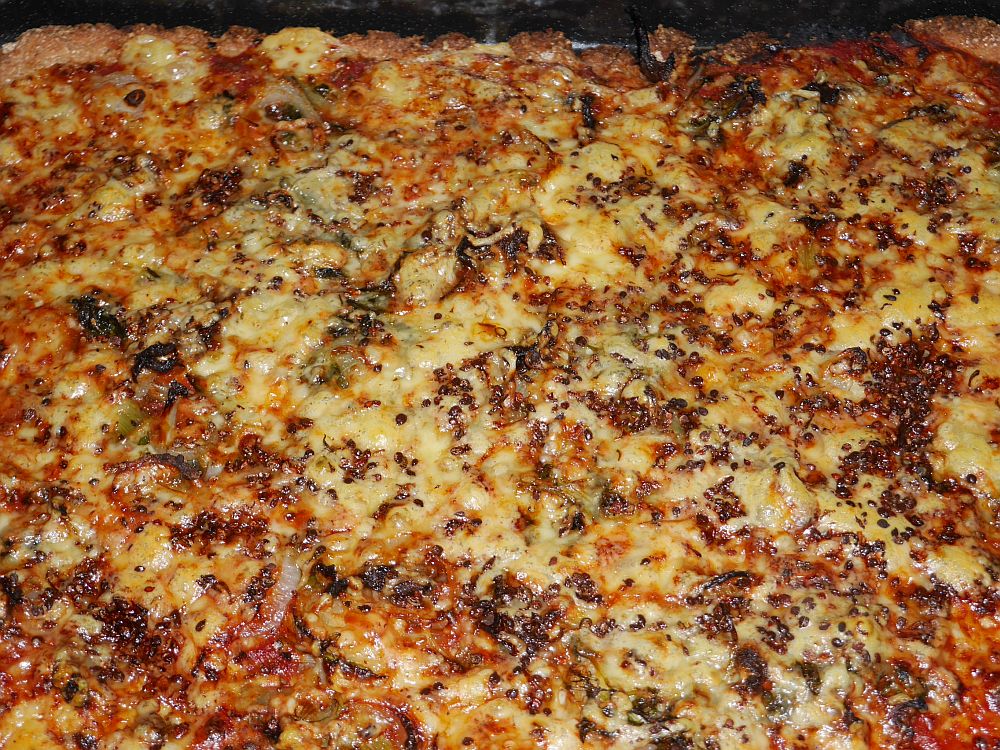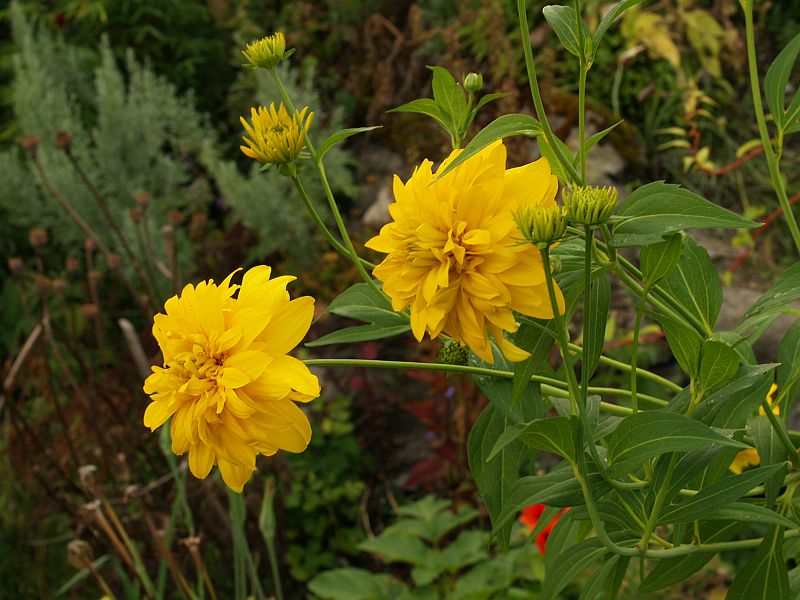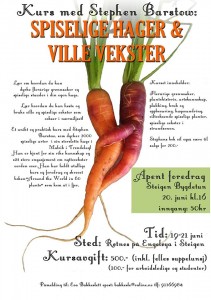- The best of vegetables ready to harvest this week: blanched sea kale (Crambe maritima), blanched lovage (Levisticum officinale) and nettles (Urtica dioica)! Delicious.
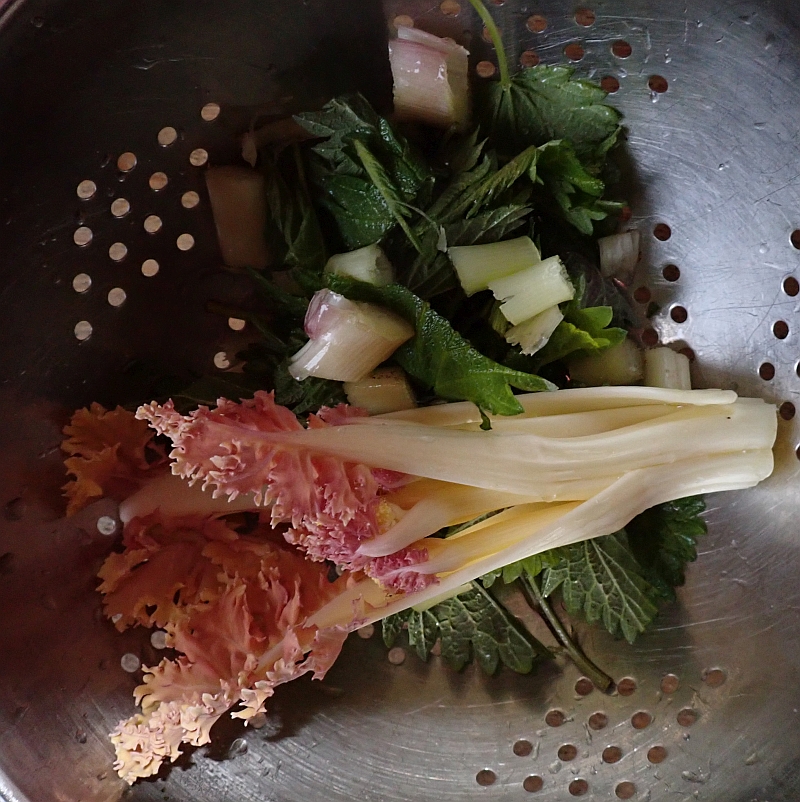
-
IT’S DANDINOODLE TIME HERE IN MALVIK: one of the year’s many highlights!This is by far my earliest dandelion to come into growth in March. It was sent to me as seed from the Alps in Switzerland, following a talk I gave there and was supposed to be similar to the moss-leaved dandelion but the leaves weren’t similar at all. These are from one plant! I’m trying to fine out which species it is…

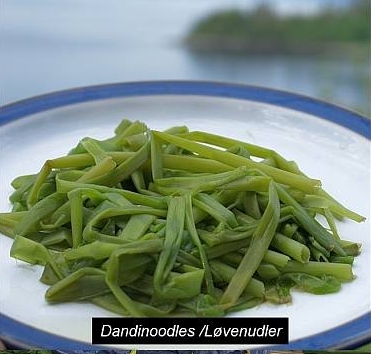 3. Allium paradoxum var paradoxum isn’t a plant you’ll want in your garden as this form has bulbils which can spread invasively. I was sent this 20 years ago from a garden in Sweden as Allium triquetrum but it wasn’t that one. I never considered either of these invasive Alliums as hardy enough to be a problem here and this one has slowly colonised the space around my oldest Hablitzia tamnoides. With warmer winters I have started more aggressive harvesting of this one.
3. Allium paradoxum var paradoxum isn’t a plant you’ll want in your garden as this form has bulbils which can spread invasively. I was sent this 20 years ago from a garden in Sweden as Allium triquetrum but it wasn’t that one. I never considered either of these invasive Alliums as hardy enough to be a problem here and this one has slowly colonised the space around my oldest Hablitzia tamnoides. With warmer winters I have started more aggressive harvesting of this one. I now harvest both the young leaves, the tops, in particular the bulbils to keep it under control. They are delicious both raw in mixed salads and cooked.
I now harvest both the young leaves, the tops, in particular the bulbils to keep it under control. They are delicious both raw in mixed salads and cooked.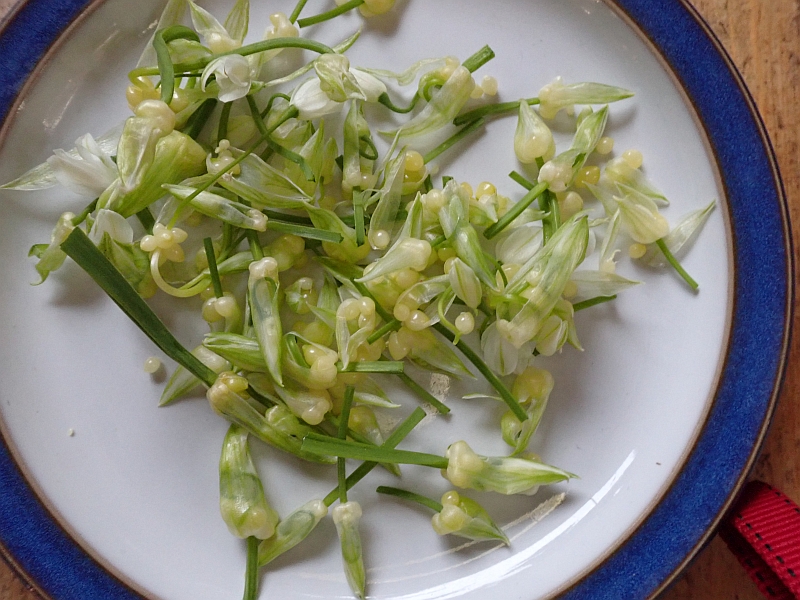
Category Archives: Invasive plants
Himalayan Balsam and Albatrellus ovinus pizza

Around the World with Fuki
At the end of February I gave a talk about my trip to Japan for the first time and showed this slide of supermarket leaf petioles, flower buds and fuki tempura which I was served!
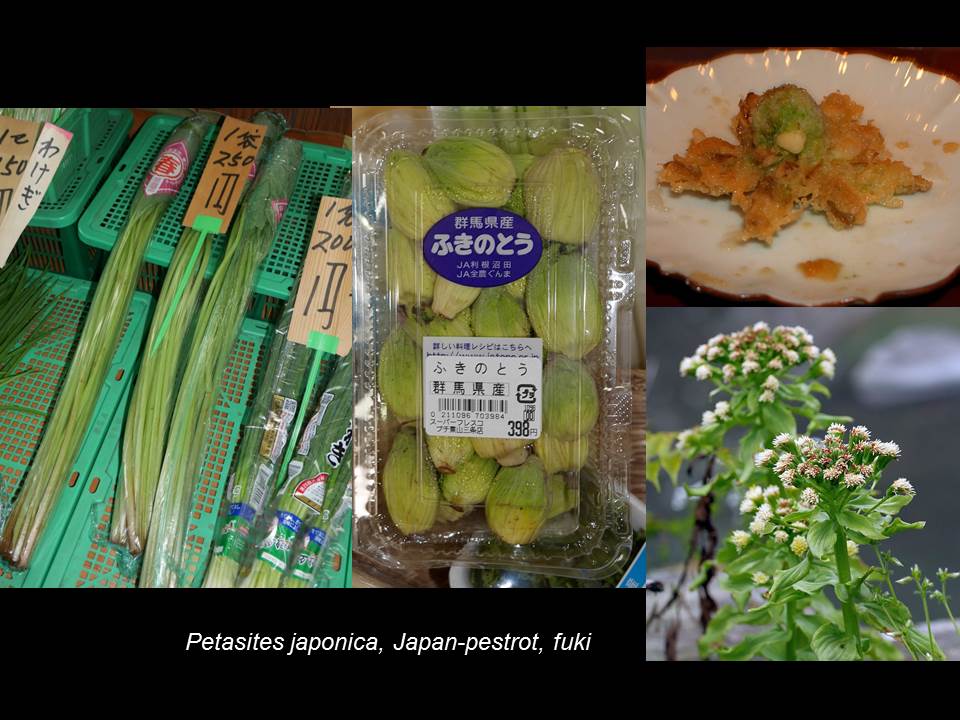
At the talk, one of the audience was Ingunn Moslet. She contacted me afterwards as she was sure that she had seen this plant growing in the centre of Trondheim. We therefore agreed that we would meet in the spring to check it out. Yesterday, 3rd May 2018, I met Ingunn in Bakklandet and she took me to the site which seemed to be an old overgrown garden (there were old redcurrant bushes on the edge of the site). Upon seeing the flowering shoots I wasn’t in doubt that this was fuki and not similarly white flowered Petasites albus from the alps which probably has higher levels of bitter alkaloids. We counted 38 flowering heads and 10 more in another location in a nearby garden. As it was at perfect stage to eat, I took one shoot with me to try that evening and a second more developed flower to compare with Petasites albus (grown contained in a pot in my garden for the bees for many years) and my own fuki (from a wild stand in Rogaland). Below is an album of pictures from our visit to the site, the fuki pakora I made last night and comparisons of the flower heads of P. japonicus and P. albus!
Although often treated as an invasive and noxious weed, I would argue it is also a valuable addition to our flora as it flowers early and therefore is a valuable source of nectar for butterflies and bees, as well as being a great perennial vegetable, so instead of spraying it with toxic chemicals like Roundup let’s love it instead and limit it by harvesting it!
See the film below which I took in the Toronto botanical garden in April 2017!
Discovering the fuki patch in Trondheim:
Noxious pizza
Incredible “Incredible Wild Edibles” by Sam Thayer
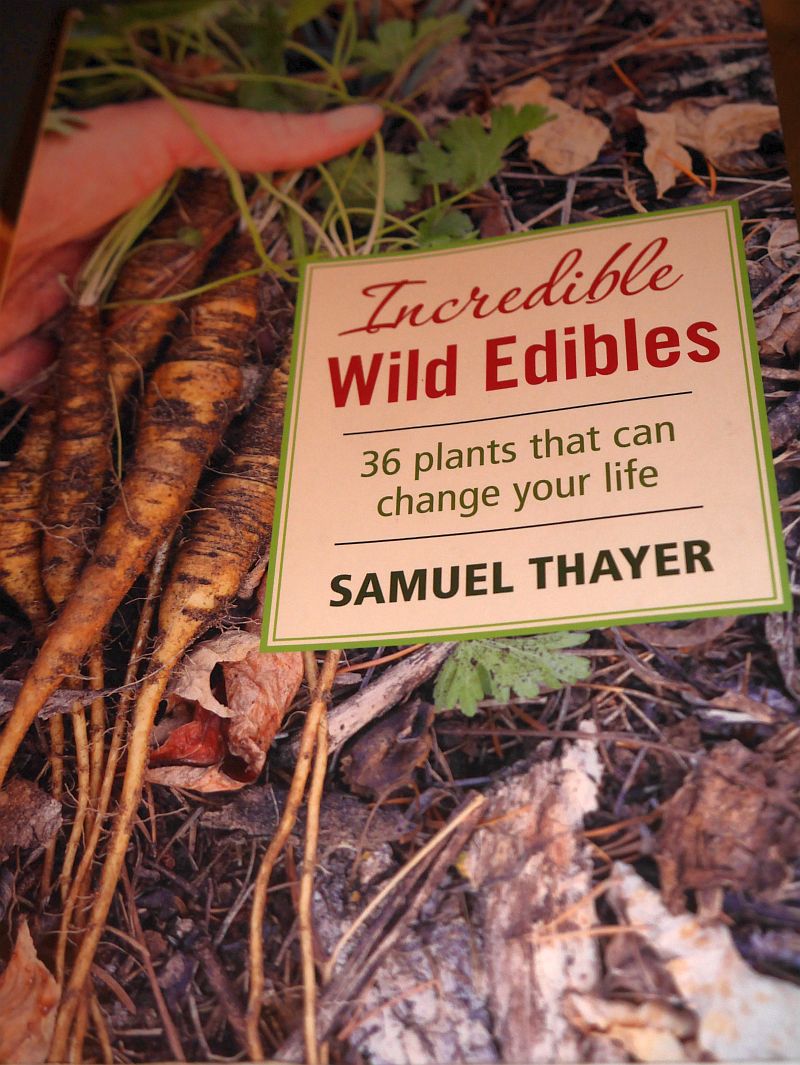
Sam Thayer is without doubt my favourite foraging author and his new book Incredible Wild Edibles does nothing to change that! It’s been 7 years since his book “Nature’s Garden” and 11 since his debut, Forager’s Garden. All his books are thoroughly researched and I love his plant descriptions, which are detailed, thoughtful and accurate with lots of fun personal anecdotes intertwined! The range of edible plants in this book is very wide and includes amongst others plants yielding berries (including one of my favourites, but rarely grown, black raspberry), leafy greens and shoots (caraway, poke and bladder campion), annual weeds (chickweed and shepherd’s purse), “ground” nuts (chufa), herbs and spices (caraway and fennel), introduced invasives (Japanese knotweed, creeping bellflower), winter crops (miner’s lettuce), root crops (Psoralea or prairie turnip and poppy mallow or Callirhoe involucrata), nut trees (hickory), seed crops (black mustard), water vegetables (watercress), sap sugar (maple) and edible flowers (violet). As with Thayer’s other books, although these are North American wild edibles, some are cultivated as garden edibles around the world and several have a wide geographic distribution including Europe or originating in Europe (I like to think that caraway was introduced originally to North America by the Vikings from here in Norway). Some are also new wave perennial vegetables being grown in permaculture inspired and forest gardens. I actually grow most of this collection in my own garden in Norway. Therefore, all of Thayer’s books are also of interest to foragers, edible gardeners and permaculturists both in and outside of North America! There are 3 species covered which I was particularly interested to read about as they are seldom covered in foraging and edible gardening books. These are water parsnip (Sium suave), Sweet root (Osmorhiza spp.) and sochan or cut-leaf coneflower (Rudbeckia laciniata), the secret vegetable of the Cherokee. I’ve grown the latter in my garden for several years (a double flowered ornamental form; see the picture) as I’d read that it was used by native americans but had never found much in the way of first hand information! I can now look forward to trying this in my ever growing collection of edimentals or edible ornamentals (plants doubling good taste with good looks!)
The book starts with a number of short essays on various relevant subjects. I particularly enjoyed his “Foraging against the invasion”, that herbicides are not the solution, creating an ecological void, quickly recolonized by invasives….that it’s unrealistic that we will win in the end…and that foragers should participate in the deliberate control of invasives as they are the people most likely to notice and have an impact. Foraging can in this way actually save native plant communities rather than what is often stated, that foraging destroys by overharvesting. And many invasives are of course excellent edibles (we are planning an invasives festival here in Norway!)
The book ends with Thayer’s essay on what he terms Ecoculture! This is Thayer’s term for the ancient practice of the management of natural ecosystems to enhance their production of useful products…and argues that it should and could become an important component of future food systems. I remember on a visit to the West Coast reading in old (suppressed) literature about the amazing extent to which Native Americans managed the forests for food and other products. This is of course nothing unique to North America. These practices are also one of the inspirations of Permaculture’s forest gardens or food forests. Thayer also describes a part of his own garden that he has planted as a diverse productive garden of edibles, but he only (or mainly) uses native plants. Native ecoculture works for Thayer as native forests in his part of the world are particularly diverse and able to supply the calories…in my part of the world this is difficult without introducing non-natives like nut trees and introduced perennial vegetables in our relatively poor native flora……therefore I use forest gardening rather than ecoculture. Thayer gives the prime example of the sugar maple and wild leek (Allium tricoccum) forests….the closest we have to this in Norway are hazel – ramsons (Allium ursinum) woods, but they are rather limited in extent and nuts are small. Our permaculture forest gardens lie somewhere between “unstable” mainstream agriculture and its predominantly annual crops and Thayer’s relatively stable natural plant communities with mainly perennials.
Thayer also argues that rather than reducing our impact, we need rather “to increase our positive impact on the landscape whilst gathering earth’s gifts to nourish and heal ourselves”. There is also food for thought that in-situ natural perennial poly-ecocultures do not involve improved varieties as domestication or plant improvement happens in isolation……
Get this book, it could indeed change your life!
Seven years was worth the wait! Thank you Sam!!
Overview of Sam Thayer’s books:
Forager’s Harvest: 2006 (360 pages) 32 plants
Nature’s garden: 2010 (512 pages) 41 plants
Incredible Wild Edibles 2017 (479 pages) 36 plants
Invasives talk at the Norwegian Biodiversity Information Centre
After lunch, there was a presentation from 4 students who had won a prize for developing a web site (not up yet) for providing recipes for invasive species…on my suggestion, they secured the web address invasivore.no!!!
Invasive Moonglow Quiche
The pie crust was made of whole grain fine naked barley flour (Hordeum vulgare var. nudum).
Join me on the island of the Angels in Northern Norway in June!
Svartelistet søtsak (“blacklisted goodies”) article
http://www.edimentals.com/blog/?page_id=737 (all my articles from the magazine Sopp og Nyttevekseter er available here / alle mine artikler fra Sopp og Nyttevekster er samlet her)
and
http://www.skogoglandskap.no/temaer/spiselige/subject_view
Sowing Ground Elder seed
When I saw seed of ground elder /bishop’s weed / skvallerkål (Aegopodium) on offer on a Polish seed trade list a couple of months ago I just couldn’t resist (I have never – understandably – seen seed offered before….). I thought I would sprout the seed for ground elder shoots….
